GDP figure based on old data
PBS assumed full PSDP utilisation despite actual spending falling short, NA told

Pakistan's Chief Statistician Dr Naeemuz Zafar said Thursday that the 2.7% economic growth estimate for this fiscal year is based on a 15-year-old livestock survey and assumes full utilisation of the Rs1.1 trillion development budget.
While responding to questions about the controversy over this year's economic growth figure along with Planning Minister Ahsan Iqbal, Dr Zafar claimed that there would be no major downward revision in the 2.7% figure for the outgoing fiscal year.
Iqbal also proposed a new formula for resource distribution under the National Finance Commission (NFC), moving away from the current population-centric model.
The Pakistan Bureau of Statistics (PBS)'s chief statistician called objections to the 2.7% growth rate "unfortunate" and said if a committee is formed to investigate, the PBS is ready to appear.
The government claims a 2.7% GDP growth this year, which independent economists have disputed, estimating it to be closer to 2%. A major objection concerns the 4.8% livestock sector growth.
The livestock sector's 4.8% growth was based on a survey conducted back in 2010, admitted Dr Zafar, adding that there was no deviation from the standard methodology.
When asked how the agriculture sector showed 0.6% growth despite a 14% output decline in major crops, Dr Zafar said the growth was driven by livestock, forestry and minor crops.
The Gross Domestic Product (GDP) growth figure has been worked out in a transparent manner by following a methodology endorsed by the United Nations and the international financial institutions, he said.
He also confirmed a new agriculture and livestock census has been completed but awaits the planning minister's approval due to his budget commitments.
He added that the Household Integrated Economic Survey, Labour Force Survey, and agriculture census would be ready by October for the next National Accounts Committee (NAC) meeting.
Leader of the Opposition Omar Ayub Khan raised the disputed GDP issue during the National Assembly Standing Committee on Finance meeting held on Thursday.
In a statement, the statistician also stated PBS used the full Rs1.1 trillion federal Public Sector Development Programme (PSDP) figure for GDP calculationshighlighting a glaring methodological flaw.
However, Finance Secretary Imdad Ullah Bosal told the same committee that against the Rs1.1 trillion PSDP allocation, only Rs662 billion had been spent so far. He added that by June-end, spending would remain below the revised Rs967 billion figure.
When asked whether the GDP would be drastically revised in the next NAC meeting, Dr Zafar again said no major revision was expected.
Speaking at the meeting, the planning minister said the country was on a path to steady economic recovery with a goal of sustainable economic growth.
Iqbal added that Pakistan continues to face structural problems of fiscal constraints. Due to limited space, next year's federal PSDP will be just 0.8% of GDPdown from 2.6% seven years ago.
The planning minister noted that the federal government's Rs11 trillion net revenues were barely enough to cover defence and debt servicing.
"With limited tax contributions, people cannot hope for international standard facilities," said Iqbal.
He also called for reforming the NFC award by shifting away from the predominantly population-based distribution formula with broader indicators like education and forestation. Iqbal is the second federal minister after the finance minister to propose a shift in the NFC criteria this week.
Currently, 82% of total resources are allocated based on population, which Iqbal argued incentivises population growth, harming national interests.
He said the Planning Commission would recommend shifting to a broader formula that rewards education and forest preservation.
Prime Minister Shehbaz Sharif, he added, has decided to constitute a Pakistan Population Council, comprising provincial chief ministers, to design strategies for population control.
Pakistan's annual population growth rate stands at 2.6% — nearly equal to this year's GDP growth rate.
Responding to a question whether the Federal Board of Revenue (FBR) took him into confidence before imposing taxes on the digital economy, Iqbal said these were levied with the intent to create a level playing field for conventional retailers.
Commenting on the upcoming PSDP, Iqbal said Rs230 billion had been allocated for Balochistan projects from the Rs1 trillion envelope. Despite limited resources, the government would invest more in water reservoirs.
He said Diamer Basha Dam with 6 million acre-feet capacity and Mohmand Dam with 1 million acre-feet would be completed by 2030 to mitigate water shortages caused by potential Indian efforts to block Pakistan's share of water.
Iqbal added that construction of Diamer Basha Dam would be advanced by two years with increased investment, aiming for completion by 2030 in response to regional water developments.
Due to budget constraints, funding for the Higher Education Commission (HEC) has been reduced to Rs39.5 billion. Iqbal suggested provinces should bear the responsibility of funding universities.

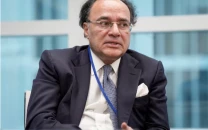
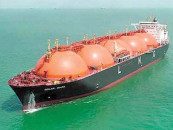



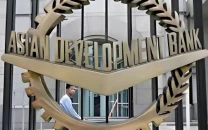
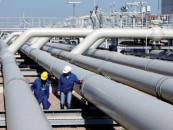



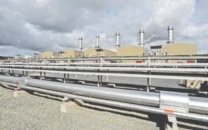


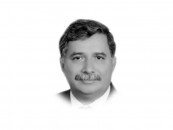
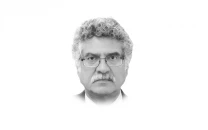




COMMENTS
Comments are moderated and generally will be posted if they are on-topic and not abusive.
For more information, please see our Comments FAQ